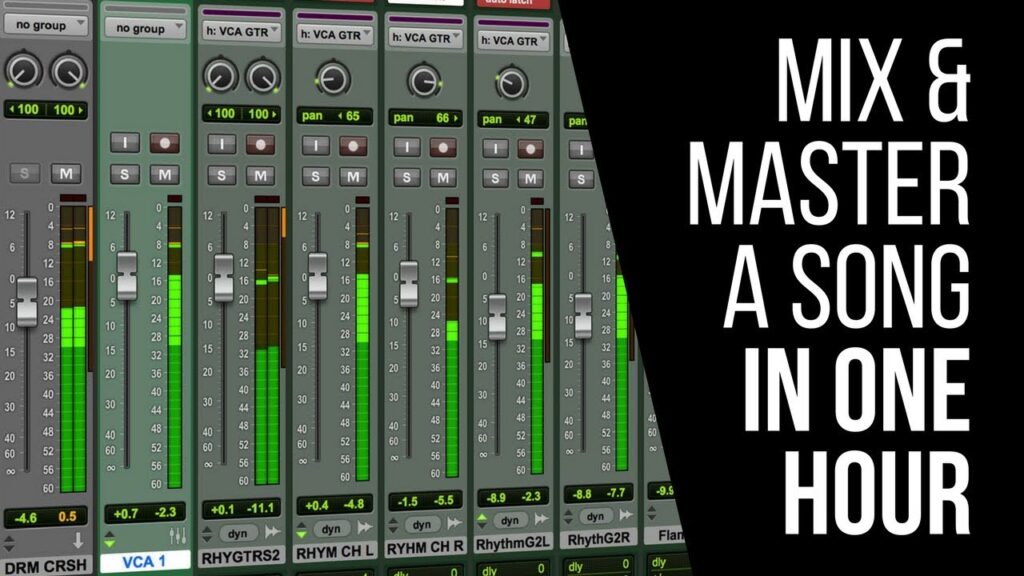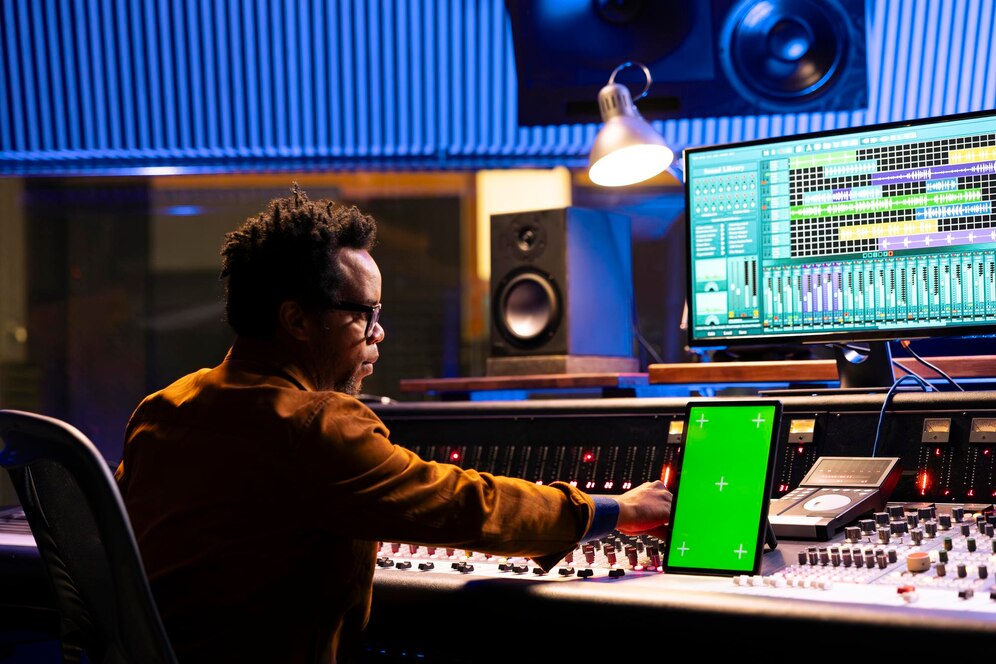Introduction: Mixing and mastering are crucial steps in music production that ensure your songs sound polished and professional. While professional studios use high-end gear, you can achieve great results even on a budget. This guide will help you understand the fundamentals of mixing and mastering, providing budget-friendly tips to enhance your music quality.

1. Understanding the Difference Between Mixing and Mastering
- Mixing: The process of blending individual tracks (vocals, instruments, effects) into a cohesive song.
- Mastering: The final step that optimizes the mixed track for distribution, ensuring consistency across all playback systems.
2. Essential Tools for Mixing and Mastering
- Digital Audio Workstation (DAW): Use free DAWs like Cakewalk or LMMS or paid options like FL Studio, Logic Pro X, or Ableton Live.
- Headphones & Studio Monitors: Budget-friendly options include Audio-Technica ATH-M40X or JBL 305P MKII monitors.
- Audio Interface: Focusrite Scarlett Solo or PreSonus AudioBox for clean sound input and output.
- Plugins & Effects: Free plugins like TDR Nova (EQ), Valhalla Supermassive (Reverb), and OTT (Compression) can elevate your mix.
3. Steps to Achieve a Pro Mix
A. Organize and Balance Your Tracks

- Label and color-code your tracks for easy navigation.
- Adjust volume levels to ensure no instrument overpowers the others.
B. Use EQ to Shape the Sound
- Cut unnecessary frequencies (low-end rumble, harsh highs) for clarity.
- Boost essential frequencies slightly to enhance vocals and instruments.
C. Add Compression for Consistency
- Use gentle compression to balance volume inconsistencies.
- Avoid over-compressing to maintain a natural sound.
D. Apply Reverb and Delay for Depth
- Use reverb sparingly to create space and depth.
- Delay can add warmth and thickness to vocals and instruments.
E. Panning and Stereo Imaging
- Spread instruments across the stereo field for a full, immersive mix.
- Keep essential elements like vocals and kick drums centered.
4. Mastering Your Track on a Budget
A. Use a Reference Track
- Compare your mix with professionally mastered songs in your genre.
- Adjust levels and tone to match industry standards.
B. Apply a Limiter for Loudness
- Use a limiter to prevent clipping while making the track loud enough.
- Free limiters like LoudMax and Youlean Loudness Meter can help.
C. Final EQ Adjustments
- Ensure the track is balanced across all frequency ranges.
- Use a subtle high-end boost for clarity and sparkle.
D. Test on Multiple Devices
- Play your song on headphones, speakers, car audio, and phone speakers.
- Adjust as needed to ensure it sounds good everywhere.
5. Free and Budget-Friendly Mastering Tools
- LANDR: AI-powered online mastering (limited free version).
- Ozone Elements: An Affordable mastering plugin with AI assistance.
- Audacity: Free audio editing software with basic mastering tools.
Conclusion: You don’t need expensive studio gear to mix and master your songs like a pro. With the right techniques, budget-friendly tools, and consistent practice, you can achieve a high-quality sound that stands out. Start experimenting, trust your ears, and keep improving your skills!